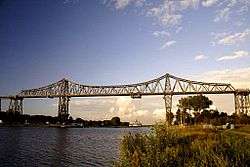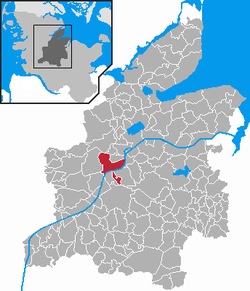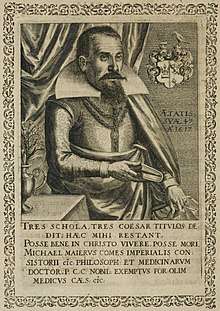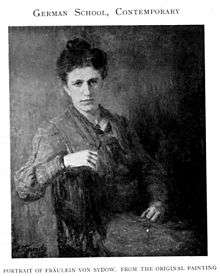Rendsburg
Rendsburg (Danish: Rendsborg) is a town on the River Eider and the Kiel Canal in the central part of Schleswig-Holstein, Germany. It is the capital of the Kreis (district) of Rendsburg-Eckernförde. As of 2006, it had a population of 28,476.
Rendsburg | |
|---|---|
 Railway bridge | |
 Coat of arms | |
Location of Rendsburg within Rendsburg-Eckernförde district  | |
 Rendsburg  Rendsburg | |
| Coordinates: 54°18′0″N 9°40′0″E | |
| Country | Germany |
| State | Schleswig-Holstein |
| District | Rendsburg-Eckernförde |
| Government | |
| • Mayor | Pierre Gilgenast (SPD) |
| Area | |
| • Total | 23.72 km2 (9.16 sq mi) |
| Elevation | 6 m (20 ft) |
| Population (2018-12-31)[1] | |
| • Total | 28,470 |
| • Density | 1,200/km2 (3,100/sq mi) |
| Time zone | CET/CEST (UTC+1/+2) |
| Postal codes | 24768 |
| Dialling codes | 04331 |
| Vehicle registration | RD |
| Website | www.rendsburg.de |
History
Rendsburg's foundation date is unknown. Rendsburg was first mentioned in 1199. An old form of its name in Danish was Reynoldsburgh.
It became a part of Holstein in the 13th century, but was transferred to Schleswig in 1460. Many times the town passed from Danish to German control and vice versa. In the German-Danish War in 1864 Rendsburg was finally seized by Kingdom of Prussia and Austria. After 1866 the town was annexed by the Kingdom of Prussia. Since that time it has remained part of Germany.
Although the Eider is navigable for small craft from its mouth on the North Sea to Rendsburg, the town's importance rose in 1895, when the Kiel Canal was finished. The much larger ships that could navigate the Kiel Canal meant that, although situated inland, Rendsburg became a seaport and a dockyard.
Main sights
The most prominent structure in town, the Rendsburg High Bridge, a railway bridge made of steel, 2,500 metres (8,200 ft) in length and 41 metres (135 ft) in height, was constructed in 1913 to take the Neumünster–Flensburg railway over the Kiel Canal from the relatively flat land on either side. It is the longest railway bridge in Europe (highway/rail bridge Øresund Bridge is longer): on the northern side, the bridge connects to the Rendsburg Loop to gain height and to allow trains to continue to serve the Rendsburg station. Suspended from the railway bridge, a transporter bridge - one of only twenty ever built - traverses the canal.
The German Army's Air Defence School and the Bundesamt für Strahlenschutz are both located in Rendsburg.
Other sights include:
- Town hall, 16th century
- Marienkirche (St. Mary's Church), 1286
- Kiel Canal Pedestrian Tunnel, longest pedestrian tunnel in the world
- The longest bench in the world (501 m), on the banks of the Kiel Canal
- Jewish Museum Rendsburg[2]
- Museums in the Cultural Centre (Historical Museum Rendsburg / Printing Museum)[3]
Notable residents, sons and daughters of Rendsburg




- early times
- Michael Maier (1568–1622) a German physician, counsellor to Rudolf II Habsburg, a learned alchemist, epigramist and amateur composer
- Christian Scriver (1629–1693) a German Lutheran minister and devotional writer
- Marquard Gude (1635–1689) a German archaeologist and classical scholar
- Calmer Hambro (1747-1806) a Danish merchant and banker.
- 19th C
- Theodor Mommsen (1817–1903) a German classical scholar, historian, jurist, journalist, politician and archaeologist; Germany's first Nobel Prize winner for literature, lived in Rendsburg for many years
- Levin Moses Wallach (1832–1903) a German-Danish rabbi [4]
- Heinrich Adolph Leschen (1836–1916) father of gymnastics and pioneer of medical massage (physiotherapy) in South Australia [5]
- Marie Davids (1847–1905) a German painter
- Ludwig Fahrenkrog (1867–1952) a German writer, playwright and artist
- Dagmar Hjort (1860–1902), Danish schoolteacher, writer and women's rights activist
- Gustav Kieseritzky (1893–1943) a German admiral during WWII
- Hans Friedemann Götze (1897–1940) Colonel in the German Waffen-SS
- 20th C
- Erhard Asmus (1907–1978) author of Low German comedies [6]
- Hans Egon Holthusen (1913–1997) lyric poet, essayist, and literary scholar
- Hans Blohm (born 1927) a photographer and author, in Canada
- Ralph-Rainer Wuthenow (born 1928), literary scholar [7]
- Hinrich Seidel (born 1931) a German chemist and President of the University of Hannover [8]
- Otto Bernhardt (born 1942), CDU politician
- Peter Reichel (born 1942), political scientist and historian [9]
- Hartmut Lutz (born 1945) University Professor with a special interest in Native American and Native Canadian studies.
- Gesine Froese (born 1947), journalist and author [10]
- Dorit Urd Feddersen-Petersen (born 1948), behavioral scientist [11]
- Herbert H. Klement (born 1949), Protestant theologian and academic [12]
- Hanne Haller (1950-2005) a German pop singer, composer, writer, producer and sound engineer
- Ingo Langner (born 1951), a documentary filmmaker, author, publicist [13]
- Andreas Willers (born 1957), German jazz musician [14]
- Gerhard Delling (born 1959) a German journalist and author
- Pierre Gilgenast (born 1965), SPD Mayor of Rendsburg [15]
- Jost de Jager (born 1965) CDU politician
- Philip Kraft (born 1969) a German fragrance chemist
- Noah Wunsch (born 1970) a German painter, photographer and designer.
- Arne Feldhusen (born 1971) film director [16]
- Marco Wriedt (born 1984), guitarist and composer [17]
- Sport
- Hans-Ulrich Buchholz (born 1944) a German rower, competed in the 1972 Summer Olympics
- Alexander Kühl (born 1973) a former professional basketball player
- Patrik Borger (born 1979) a German football coach and former footballer
- Lauritz Schoof (born 1990), rower, gold medal in the men's quadruple sculls at the 2012 Summer Olympics
International relations
Rendsburg is twinned with:[18]










References
- "Statistikamt Nord – Bevölkerung der Gemeinden in Schleswig-Holstein 4. Quartal 2018 (XLS-file)". Statistisches Amt für Hamburg und Schleswig-Holstein (in German).
- http://www.schloss-gottorf.de/juedisches-museum
- http://www.museen-rendsburg.de
- Danish Wiki, Levin Moses Wallach
- http://adb.anu.edu.au/biography/leschen-heinrich-adolph-13043
- German Wiki, Erhard Asmus
- German Wiki, Ralph-Rainer Wuthenow
- German Wiki, Hinrich Seidel
- German Wiki, Peter Reichel
- German Wiki, Gesine Froese
- German Wiki, Dorit Urd Feddersen-Petersen
- German Wiki, Herbert H. Klement
- German Wiki, Ingo Langner
- German Wiki, Andreas Willers
- German Wiki, Pierre Gilgenast
- German Wiki, Arne Feldhusen
- German Wiki, Marco Wriedt
- "Partnerschaftsstädte". rendsburg.de (in German). Rendsburg. Retrieved 2019-11-28.
External links
![]()